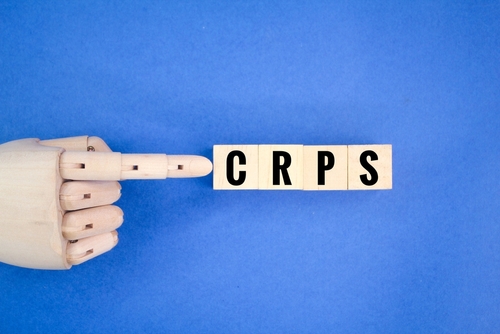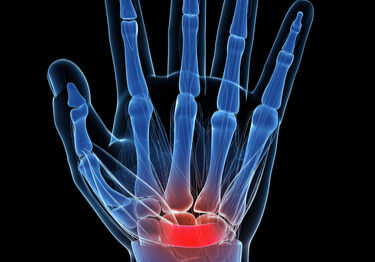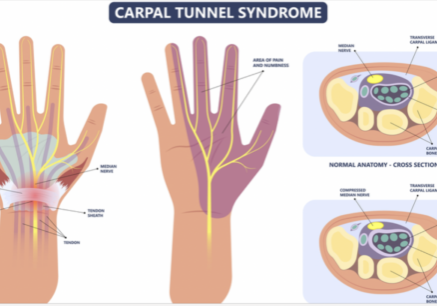Risk Factors for Complex Regional Pain Syndrome (CRPS) in Patients with Hand Trauma
Filed under Reviews
Hand Trauma and CRPS in patients attending Hand Therapy
By Tristany Hightower
Savaş, S., İnal, E. E., Yavuz, D. D., Uslusoy, F., Altuntaş, S. H., & Aydın, M. A. (2018). Risk factors for complex regional pain syndrome in patients with surgically treated traumatic injuries attending hand therapy. Journal of Hand Therapy, 31(2), 250–254. https://doi.org/10.1016/j.jht.2017.03.007
The Skinny
This study investigated the risk factors for CRPS after hand trauma that required surgical intervention.

In the Weeds
Patients who sustained a hand trauma were evaluated at three days postoperatively and throughout three months of hand therapy to evaluate for symptoms of complex regional pain syndrome (CRPS). The following criteria was gathered.
- Age
- Sex
- Work Status (manual labor vs. non-manual)
- Pain level at three days post-op
- Injury type (Crush injury, cut laceration injury, blunt trauma)
The pain was measured using the Pain Numerical Rating Scale (PNRS).
Patients presenting with CRPS symptoms (using Harden et al. 2007) throughout the 3-month period were referred to another medical professional for evaluation/diagnosis of CRPS.
Bringing it Home
68 of the 260 patients were diagnosed with CRPS. Over half of those diagnosed with CRPS were diagnosed in the second month of rehabilitation. Age, sex, and work status were not significant risk factors for CRPS. A score of >5 on PRNS at 3 days post-surgery was a risk factor for CRPS. Crush injuries were also a risk factor for CRPS (4.7x more likely to develop CRPS). Postoperative pain and type of injury should be carefully investigated in hand therapy practice to identify early signs and potential risk factors for developing CRPS.
Rating: 3 out of 5
In contrast to other studies on CRPS, this study found that being female was not a risk factor for CRPS. These results could have been impacted by the number of males in the study compared to females (n=210 vs. n=50). This is a threat to external validity, impacting the generalizability of the results. Also, due to the complex nature of CRPS, diagnostic criteria can vary between studies/medical providers. This makes the results in this study only generalizable to other studies that utilized the same diagnostic criteria.
More To Read
Carpal tunnel syndrome and its association with body mass index, wrist ratio, wrist to palm ratio, and shape index
A literature review of carpal tunnel syndrome and its association with body mass index, wrist ratio, wrist to palm ratio, and shape index Madani, A. M., Gari, B. S., Zahrani, E. M. A., Al-Jamea, L. H., & Woodman, A. (2022). A literature review of carpal tunnel syndrome and its association with body mass index, wrist…
Read MoreWhich is better: Splinting the MCP or PIP joint when managing Trigger Finger?
Teo, S. H., Ng D. C., Wong, Y.K.(2018). Effectiveness of proximal interphalangeal joint blocking orthosis vs metacarpophalangeal joint blocking orthosis in trigger digit: A randomized clinical trial. Journal of Hand Therapy, 1-7. The Skinny- This study compared PIP joint immobilization via an Oval-8TM with a custom MCP blocking trigger finger orthosis treatment. In the Weeds…
Read MoreCarpal Tunnel Release: Outcomes of Pediatric and Adolescent
Rapid Review. Outcomes of pediatric and adolescent carpal tunnel release based on etiology. Velicki, K., Goldfarb, C. A., Roberts, S., & Wall, L. B. (2021). Outcomes of pediatric and adolescent carpal tunnel release. The Journal of Hand Surgery, 46(3), 178-186. The Skinny: Less than 1% of pediatric carpal tunnel is idiopathic in nature, compared to…
Read MoreSign-up to Get Updates Straight to Your Inbox!
Sign up with us and we will send you regular blog posts on everything hand therapy, notices every time we upload new videos and tutorials, along with handout, protocols, and other useful information.





